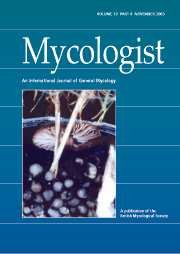Article contents
Useful fungi of the world: morels and truffles
Published online by Cambridge University Press: 05 May 2004
Extract
Morels and truffles differ widely in their form and behaviour. The morels resemble mushrooms to the extent that they have a cap borne upon a central stem, whilst the truffles form solid, round balls, which grow underground. These are the edible ascomycetes. Both morels and truffles represent some of the most highly prized edible mushrooms in the world.
The morels are sometimes referred to as the ‘truffles of the north’, but other popular names include ‘sponge’, ‘pine cone’, ‘corncob’, and ‘honeycomb mushroom’. They are the most popular of the springtime, edible fungi, usually occurring from late March through to mid-June, although each crop will survive only for a several days. Morels have a delicate flavour that can be overwhelmed during cooking, but delicious when eaten alone. They are normally prepared by frying in butter and can be preserved, with drying being the most popular method.
- Type
- Original Article
- Information
- Copyright
- © 2003 Cambridge University Press
- 9
- Cited by




